WHISTORY:
Confusion and uncertainty has surrounded the practice of whistles stamped with the word MAKER, predominantly seen in Glasgow, but the practice was used elsewhere in Great Britain ( i.e. Grantham, Belfast & London ). To date we have recorded:
- Belfast ( Capitol N Ireland birth of the Titanic )
- London ( Capitol of England )
- Glasgow ( Major port of Scotland )
- Grantham ( city 100 miles N of London in Lincolnshire )
We have found no other areas where whistles were produced with ‘MAKER’ stamps. If we do, we will include them here and update the article. What we do see at present is a localized practice within Great Britain; the dates appear to be circa 1890 to circa 1910, or what amounts to a twenty year period. Round whistles, a single known beaufort and escargots have displayed these stamps. not However one significant group of whistles NOT having MAKER stamps are GSWs, a major class of whistles in circulation during this same period.
We have collated the three known groups with available pictures or records of pictures with known and included possible manufacturers.
We would like to propose — that MAKER has been misconstrued as the manufacturers of the whistles stamped with MAKER. Sometimes it is true in both senses, yet at the same time it is known to obviously not mean that to be the case of MAKER & manufacturer. The two proposed definitions are as follows.
1) MAKER ( exclusive ) = of products excluding whistles (a synonym for maker would be manufacturer )
2) MAKER ( inclusive ) = maker of products including whistles
The question is—what was the manufacturer trying to accomplish by stamping MAKER on whistles ?? Apparently it was advertising of their company, and not identification of the ‘making’ of whistles.
While a manufacturer makes many products and advertised that at times, it is a large word to stamp on a whistle. To stamp MAKER would be simpler and get across the same thought, yet fit much better on a whistle front ( or back ). Therefore to stamp MAKER on a whistle would be to primarily advertise a MAKER ( i.e manufacturer ) of products. This of course would be confusing later as to who actually made the whistle, as sometimes they were by coincidence the same company that made the whistle and it might appear on the surface that they were merely claiming to be the whistle maker. In reality it was still advertising their whole company’s line of products.
Let’s see how that might work. We can look at S. Auld whistles for help here as a prolific user of this method of stamps, circa 1880 — Known S. Auld whistles were stamped with:
S. Auld MAKER Glasgow
Westwood MAKER Glasgow
J. Christie MAKER Glasgow
For a certainty Auld was a MAKER ( manufacturer ) of whistles and that is well established. It is also well known that he manufactured many other products. Perhaps for a brief period Westwood was similarly connected to him or had his own whistle(s) made by Auld for when he briefly went on his own, making it quite rare.
Trade directories list several manufacturers ( i.e. James, John ) as possible candidates for J. Christie, who were all MAKERS –apparently one of which manufactured product and advertised whistles made by S. Auld. However they are not listed as whistle ‘makers’ nor have any other whistles besides Auld’s surfaced by them.
Furthermore, when Hudson bought out Auld in 1907, they continued to use Auld’s stamp as MAKER. Obviously Auld was not the maker, but Hudson.
How then can we break down what IS known at this point ?? Starting with round whistles we see that out of 7 known stamps with MAKER on them that there was only one whistle manufacturer with MAKER stamped on them and that would be Auld.
This being said let’s look at examples of both types of advertisements.
WHISTLE ARCHEOLOGY
ROUND WHISTLES:
1) R. Livingstone – – this whistle was engraved after manufacturing. The overall
look is similar to Auld. However the neck below the top knop is sufficient to be
cautious to assign it to him at this point, leaving the possibility of a different
manufacturer such as Yates.
2) S. Auld – actually made by Auld
3) S. Auld – made by Hudson post 1907 with the pillar top.
4) Jas. Simmons – probably made by Hudson, possibly Ward, DeCourcy
5) Faulkner – made by Stevens
6) Westwood – made by Auld ( no picture )
7) J. Christie – probably by Yates ( no picture )
ROUNDS
Maker – R. Livingstone ( Glasgow )———————————————-UNKNOWN, AULD ?
Maker – S. Auld ( Glasgow ) –—————————————————–AULD
Maker – Auld (Birmingham ) –—————————————————- HUDSON
MAKER – Jas. Simmons ( Birmingham ) ——————DeCourcy,WARD,HUDSON ?
MAKER – Faulkner ( London ? ) ————————————————– STEVENS
MAKER – Westwood ( Glasgow ) ———————————————– AULD ?
MAKER – J Christie ( Glasgow ) ———————————————– AULD,YATES ?
Apparently DeCourcy did not stamp maker on Auld whistles.
Here is the engraved round for Livingstone
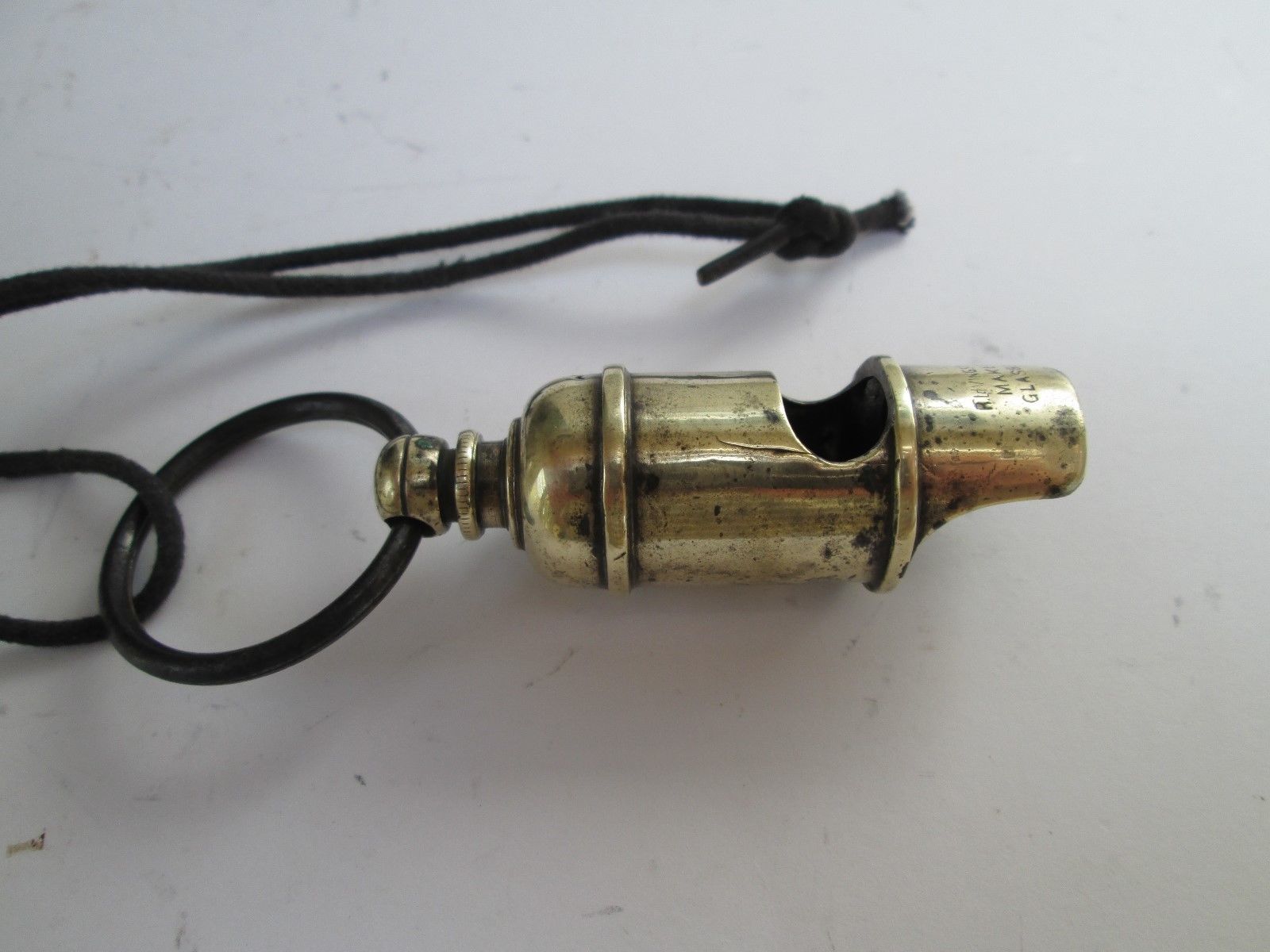
(Photo by permission)
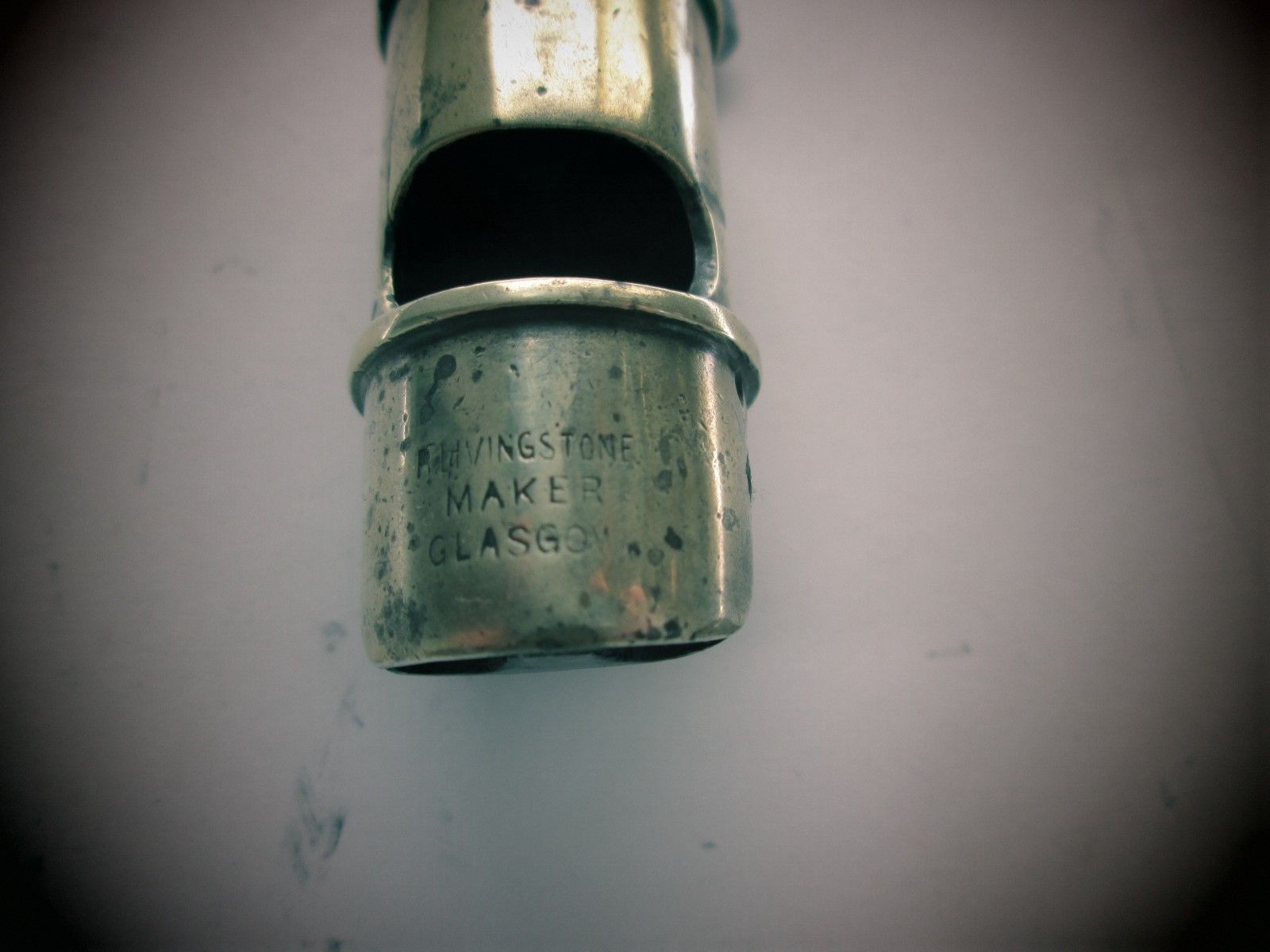
(Photo by permission)
Auld many times stamped MAKER on his round whistles
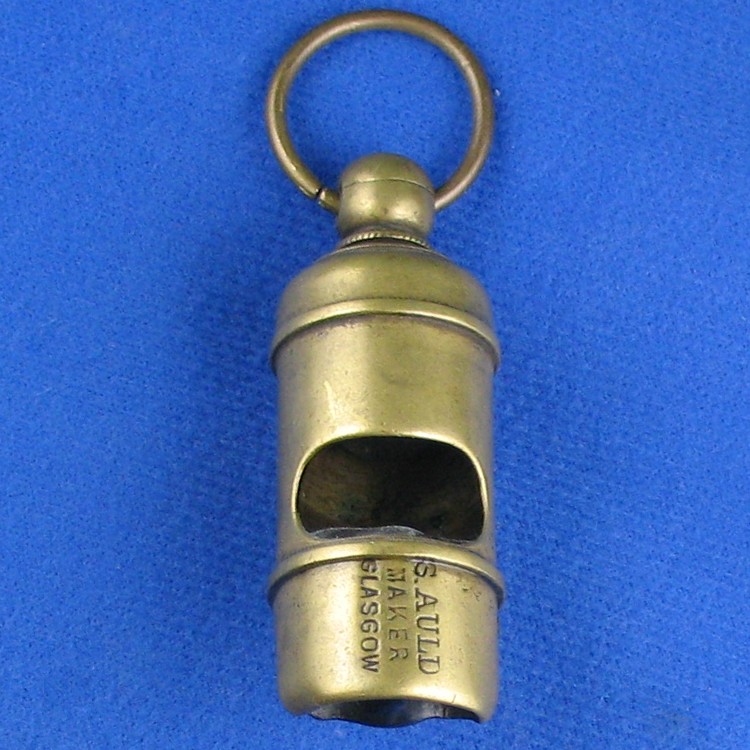
Simmons is listed elsewhere as a Hudson whistle, but appears more closely aligned with Ward or even DeCourcy – but not Simmons as a manufacturer of whistles.
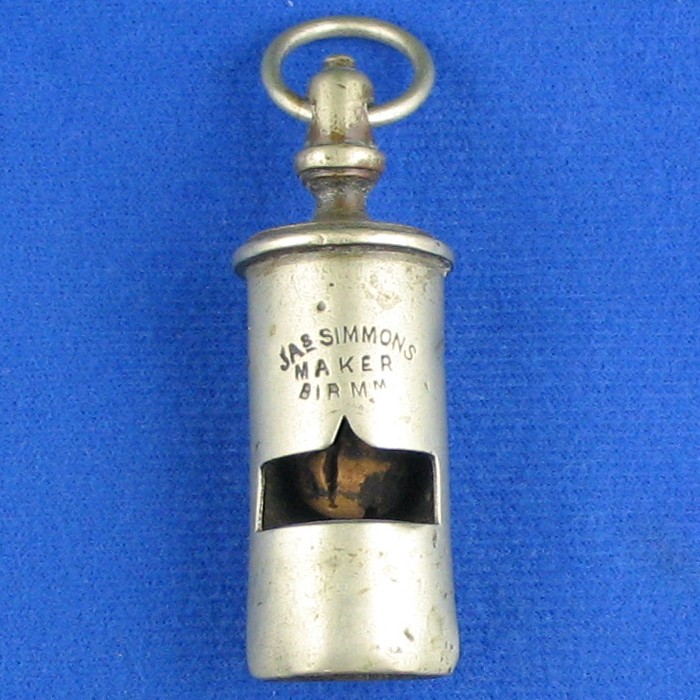
This is clearly mad by Stevens and Faulkner does not show up anywhere as a manufacturer of whistles.
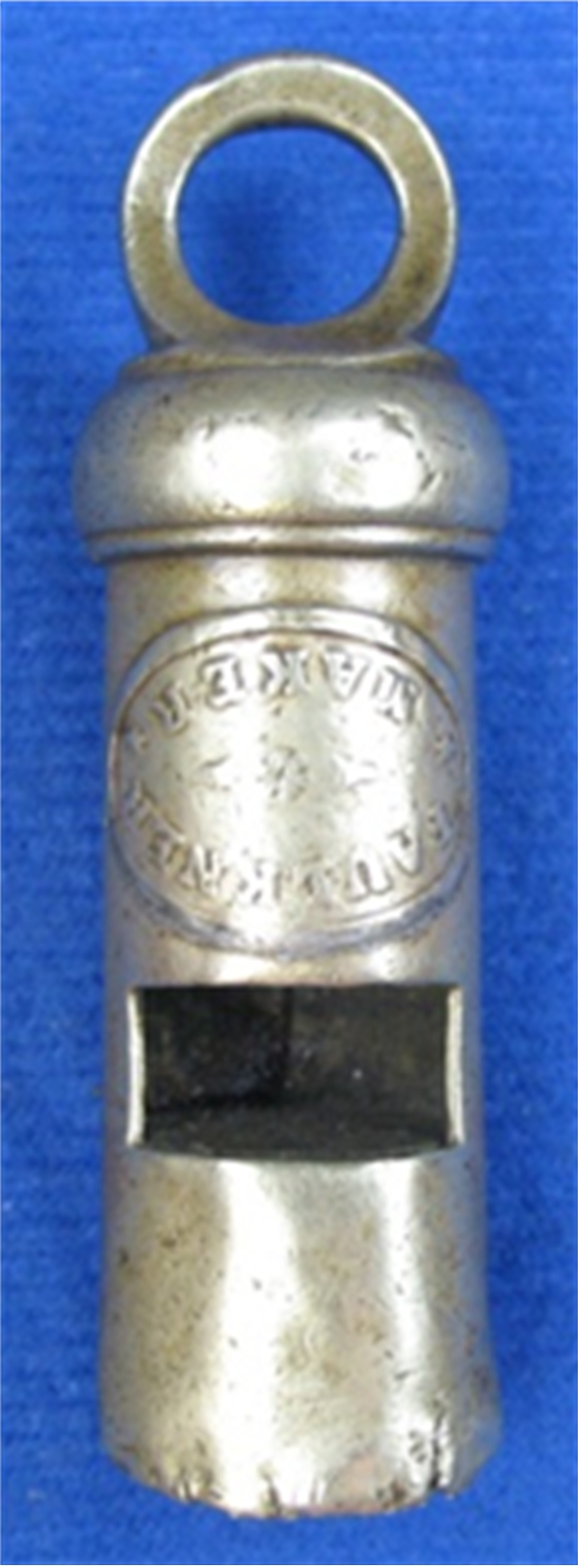
Hudson takes over Auld in 1907 and the change to a distinct pillar top was introduced. Clearly it was not made by Auld although it is stamped that Auld was the MAKER. At this point they were not even making other items.
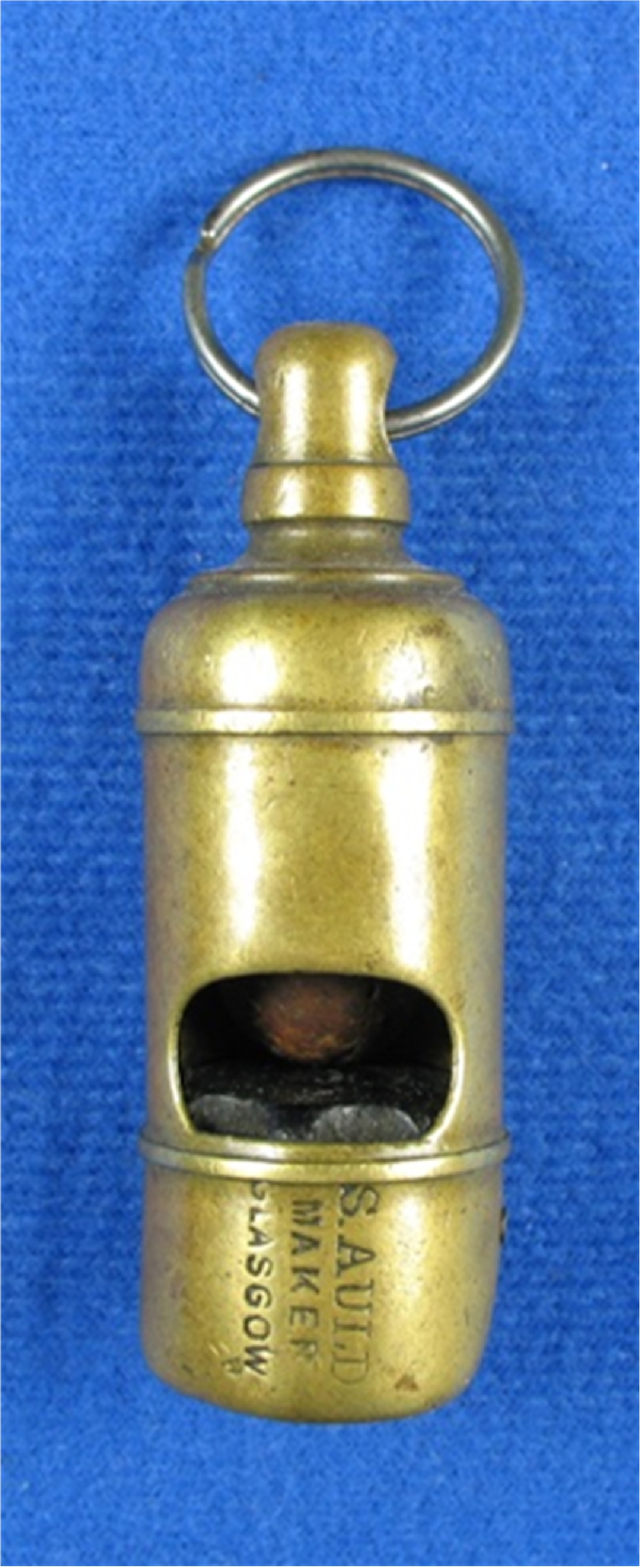
A whistle surfaced with Westwood MAKER Glasgow. He was associated for a very brief time with Auld and then went on his own for an even briefer time where he perhaps ordered a whistle for himself ?? It is the only one known. If a picture is sent in with permission we will post it here. However suffice it to say that Westwood did not prove to be a whistle manufacturer in any way. It is clearly an Auld design.
( NO PICTURE )
J. Christie Maker Glasgow looks to be by Yates.
( NO PICTURE )
ESCARGOT WHISTLES:
Escargots are much the same as what was discussed with round whistles, just different players. Although there are some important insights.
To help us in our examination of this period, we will call the earliest 5 piece whistles classic in the sense that 5 piece construction appeared in the 1880s, yet was used for the next century. The majority of whistle stamped MAKER are 5 piece escargots. However this early period was the classic beginning period so we will use this reference. Most of these whistles are set apart in style, period workmanship and manufacturing.
An example how easy it is to be misled with the stamp MAKEWR is with the stamp D. Black MAKER Glasgow. D. Black is credited with manufacturing and designing the earliest dated ‘escargots’, pre 1890 with classic 5 piece escargots. ( Auld patented the 6 piece escargots, not until 1890. )
What then follows are assumptions such as… they were “pioneers of Snail type whistle making and may well have been the first to use the title ‘ Thunderer ‘ for a whistle.” … can be made due to lack of research. Once published this gets repeated as fact. Consequently an escargot whistle recently sold on auction for a very high sum.
As it turns out David Black never made whistles at all. They were ‘casters’ and had nothing to do with the ‘pressing’ required for the whistles that his name appears on. Indeed it has been substantiated that his company manufactured packing cases and other products. This was the advertising he wanted stamped on whisles. The question then arises — Who made the classic 5 piece escargots from the circa 1880s ?? The only classic 5 piece escargot known that is stamped with a manufacturing name is H. A. Ward and it is to him we look at this juncture in time.
Did Ward discontinue the labor intensive 6 cast piece whistles that he had been manufacturing and advertising in his circa 1880 ( Russel street address ) catalog ?? Did he switch to the classic 5 piece escargots during this 15 year period, let’s say circa 1880 to 1895 ?? Time will tell as we examine further these whistles. It does appear that despite other claims, Ward was the first to use the name Thunderer — not David Black.
However at this point we just do not know who made the first classic 5 piece whistles during this period. Deeper research is required.
A special sub group of classic 5 piece escargots are nickel silver ‘button’ types. In a turnaround in manufacturing, is it possible that these 5 piece escargots were made for Auld and may have stamps of MAKER on whistles made for Auld ( as well as Wm. Beech ) ?? These were heavy well-made escargots that resembled button whistles, not the workmanship seen in Auld whistles of that era.. Who made these is still unknown, but they are high quality whistles.
In conclusion, who made the many classic 5 piece escargots we see recorded today ?? It is not known or substantiated at this point , it seems Ward is a front runner though.
***However we do know that having ‘MAKER’ does not necessarily indicate who the manufacturer of the whistle is.
Known stamped whistles with MAKER on them as follows:
- Wm. Beech & S. Auld ‘button’ escargots have been found in two sizes and several known ‘buttons’ on the sides. They all have MAKER stamped under the mouthpiece. In the past it has been speculated that Auld made the 5 piece escargots. However they do not match Auld’s work. Neither in construction nor quality or even materials.
- D. Black 5 piece escargot which has MAKER stamped on it ( we purchased this whistle May 2. 2010 ) — manufacture of packing cases.
- B.B. Burley 6 piece matches H.A. Ward’s smallest model.
- McDonald 6 piece is a large whistle made by this manufacturer
- McDonald 5 piece large whistle with McDonald type knop
- McPherson 5 piece escargot with single barrel/tongue typical
- Auld 6 piece found in several sizes all stamped MAKER by Auld
- Auld 3 piece escargot made by Hudson after 1907.
- Sharples 5 piece escargot possibly made by the same name, unverified.
ESCARGOTS
MAKER – Wm Beech ( Grantham )————————————————–unknown
MAKER – S. Auld ( Glasgow )———————————————————unknown
MAKER – D Black ( Glasgow )——————————————————–Ward ?
MAKER — B. B. Burley ( Glasgow )—————————————————Ward ?
MAKER — McDonald ( Glasgow )—————————————————–MCDONALD
MAKER – McDonald ( Glasgow )—————————————————–MCDONALD
MAKERS – McPherson Brothers ( Glasgow )————————————–Ward ?
MAKER – S. Auld ( Glasgow )———————————————————AULD
MAKER – Auld (Birmingham )——————————————————–HUDSON
MAKER – T. Sharples ( Belfast )—————————————————–SHARPLES
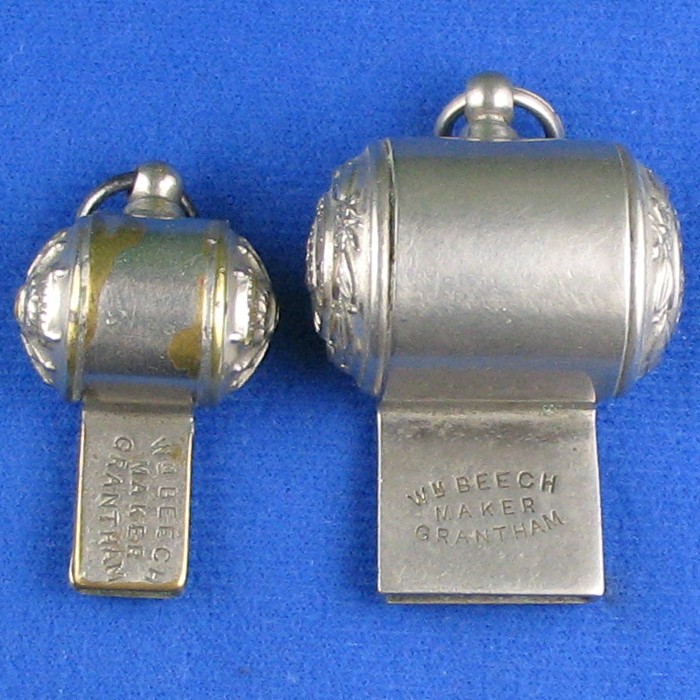
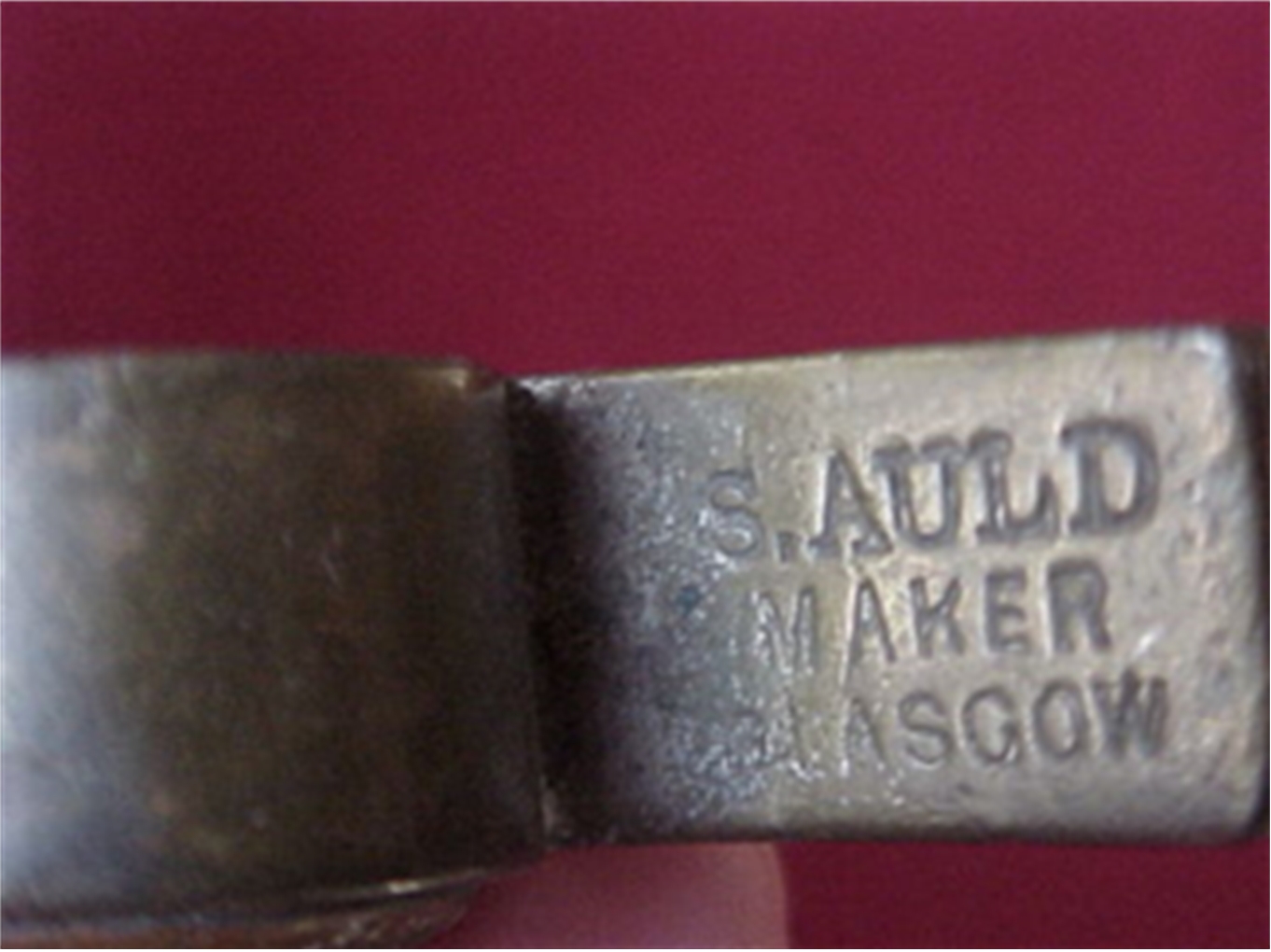
(Photo credit unknown)
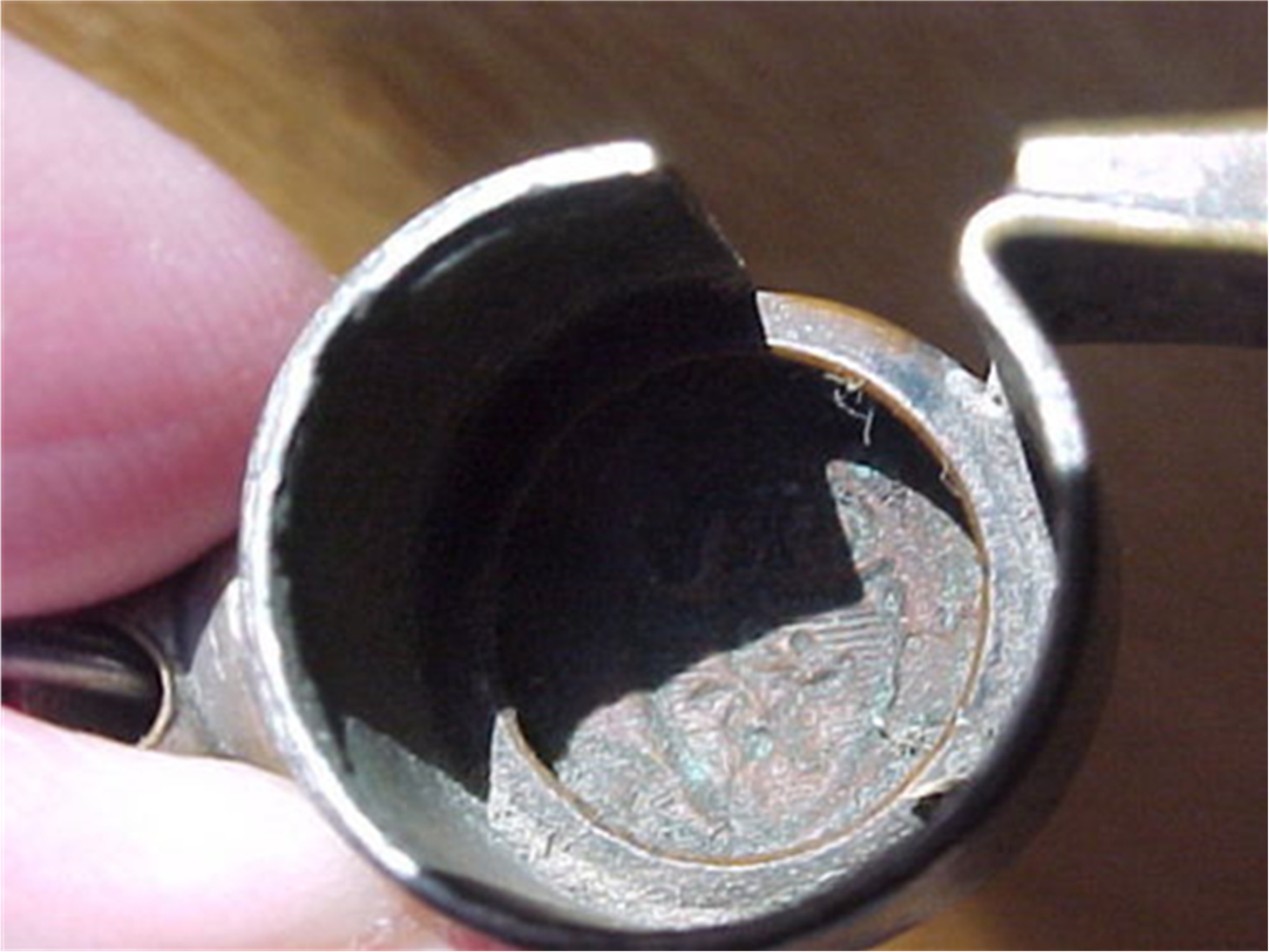
(Photo credit unknown)
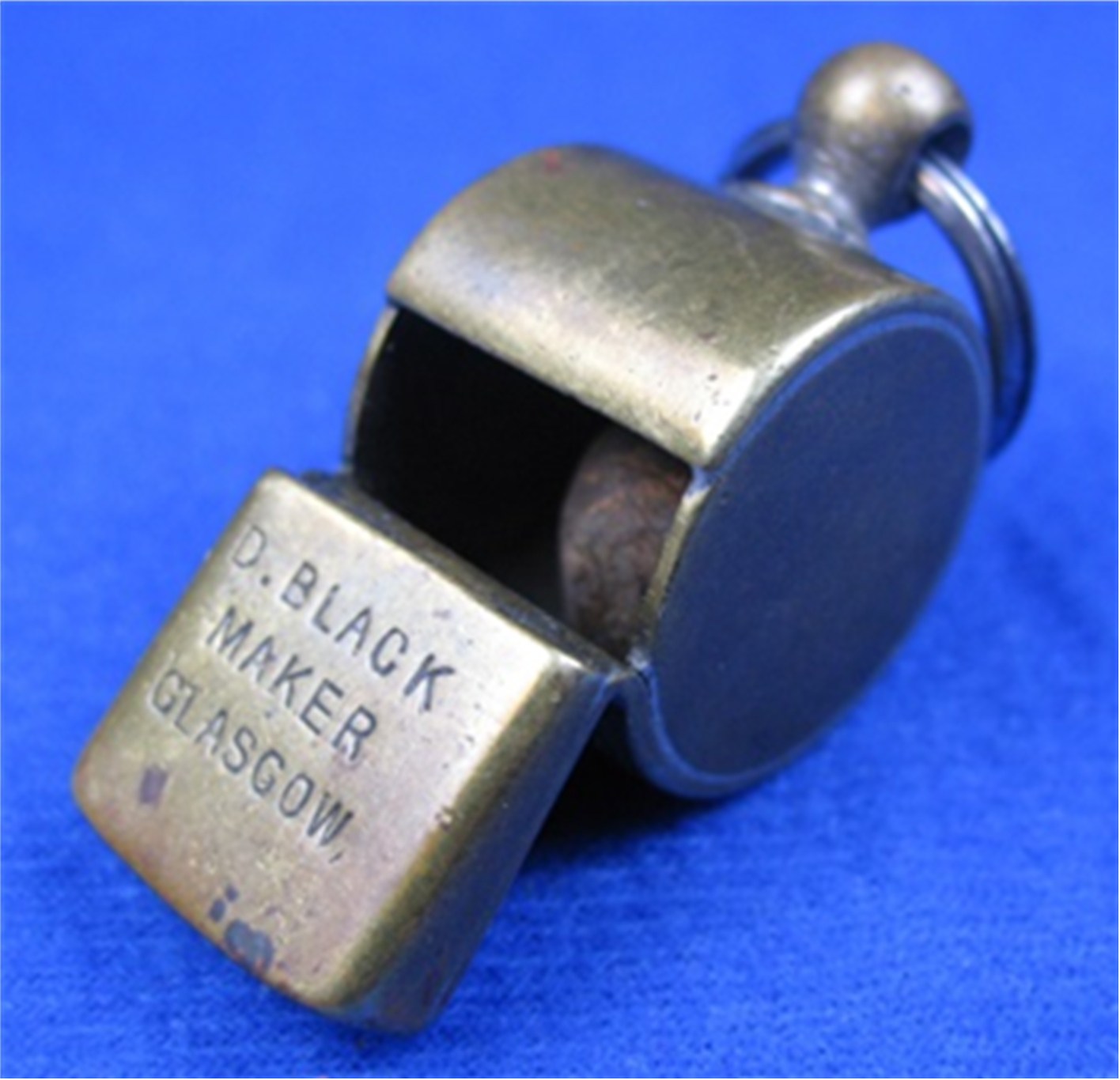
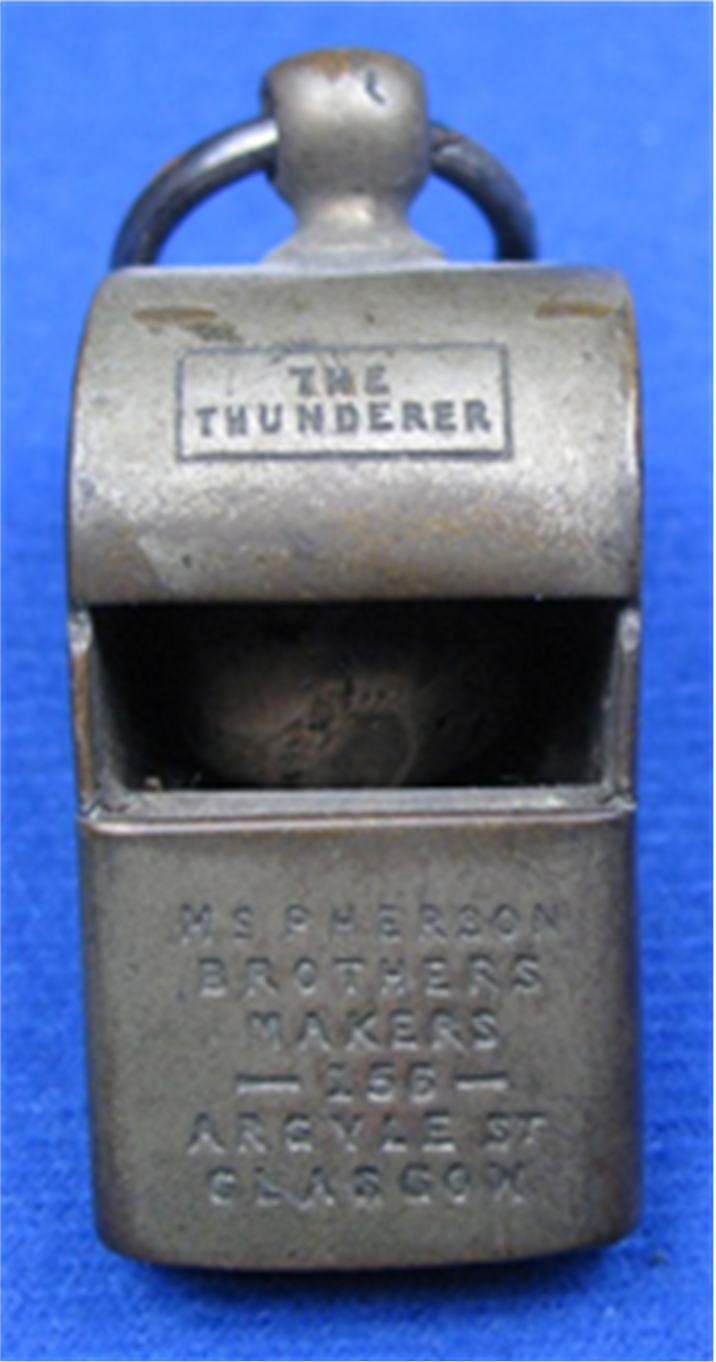
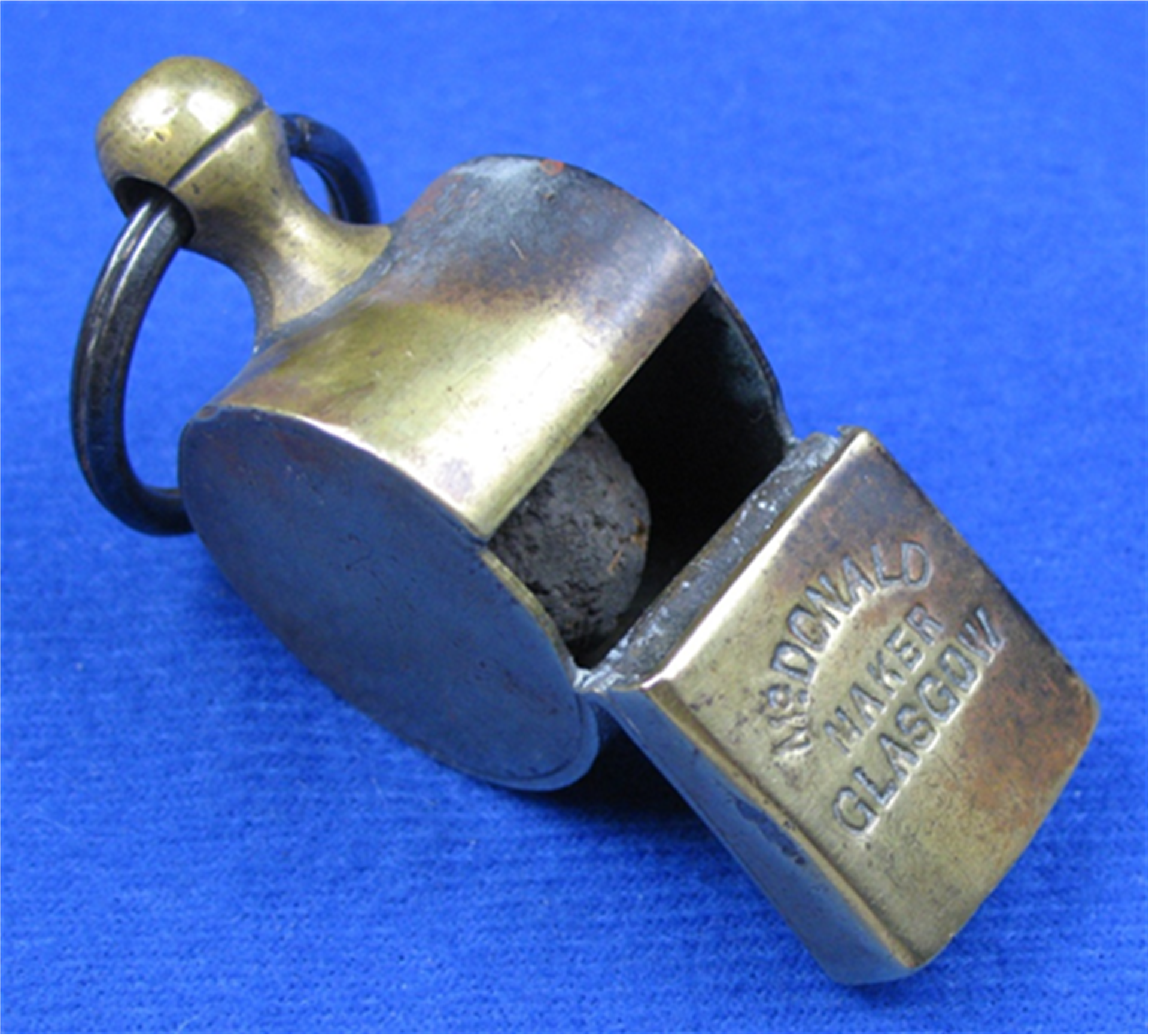
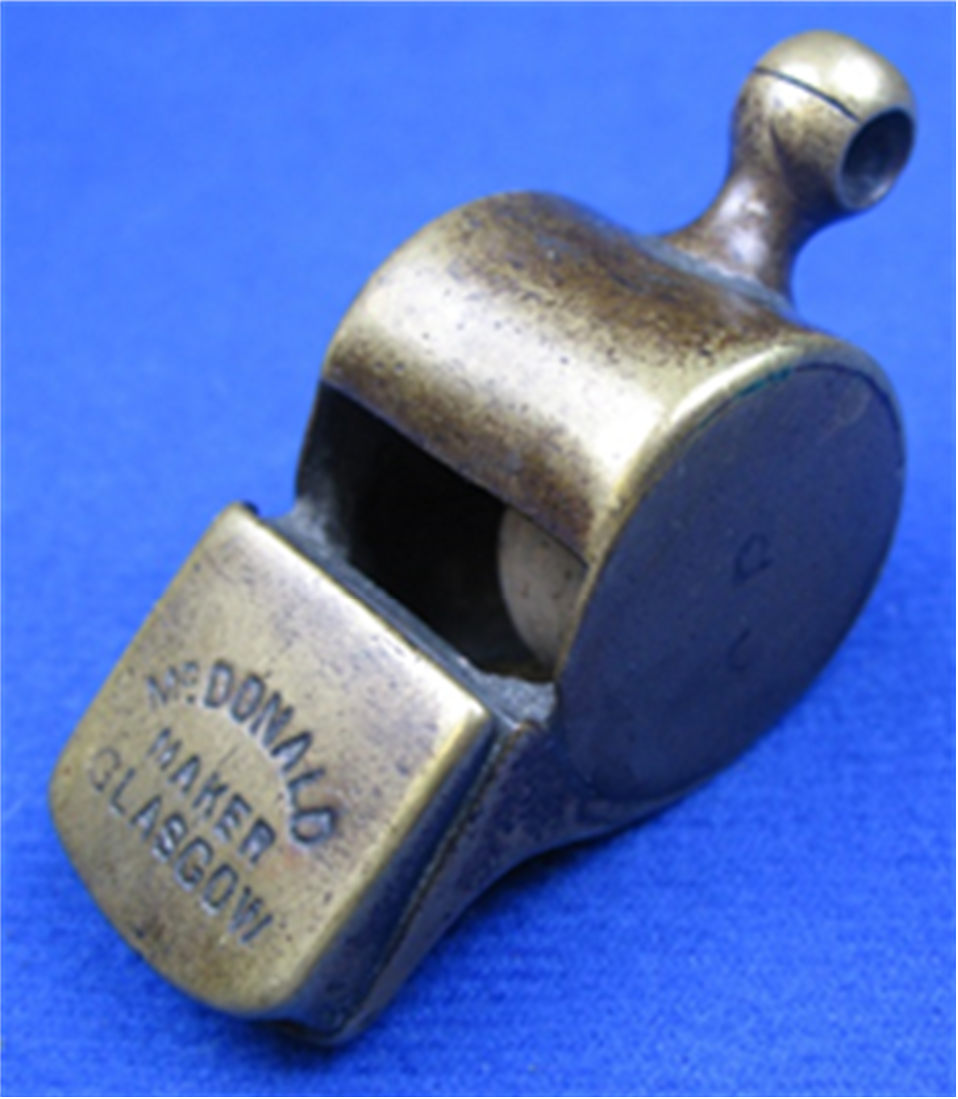
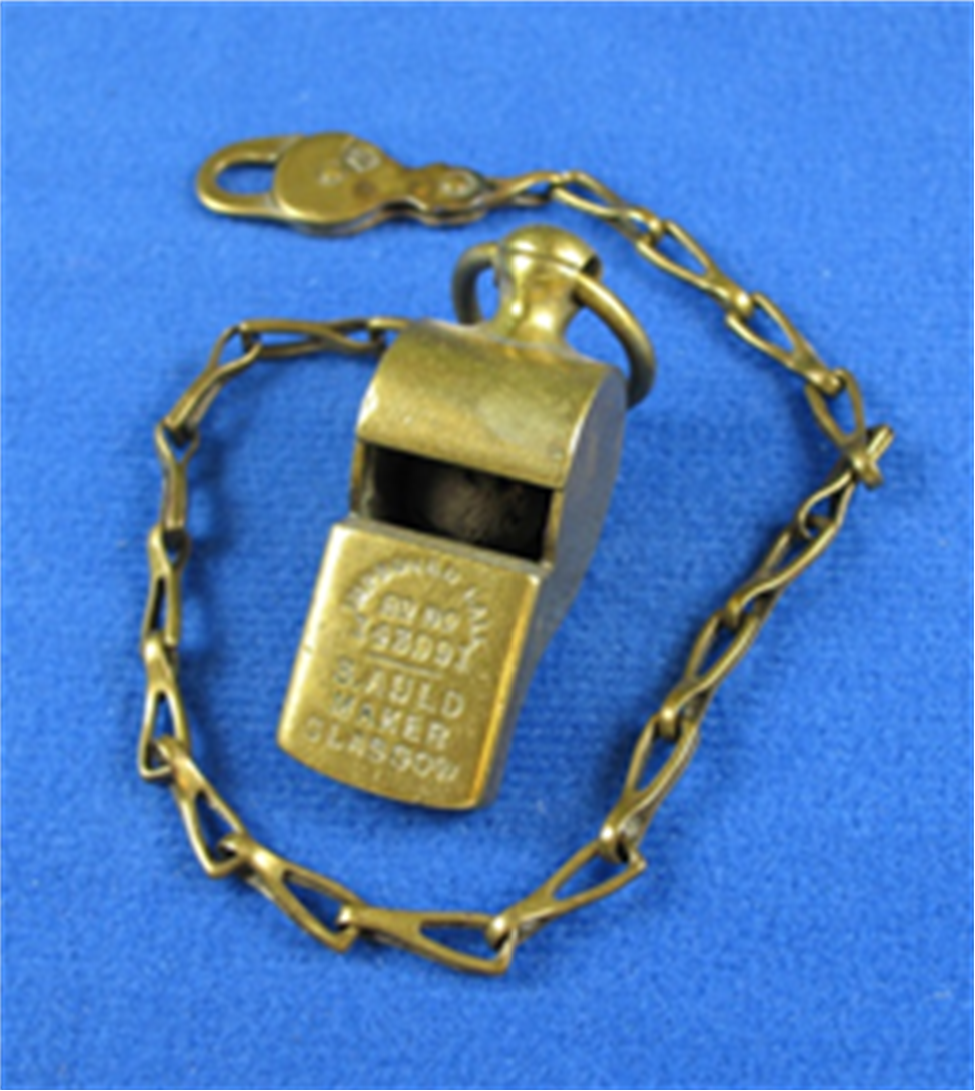
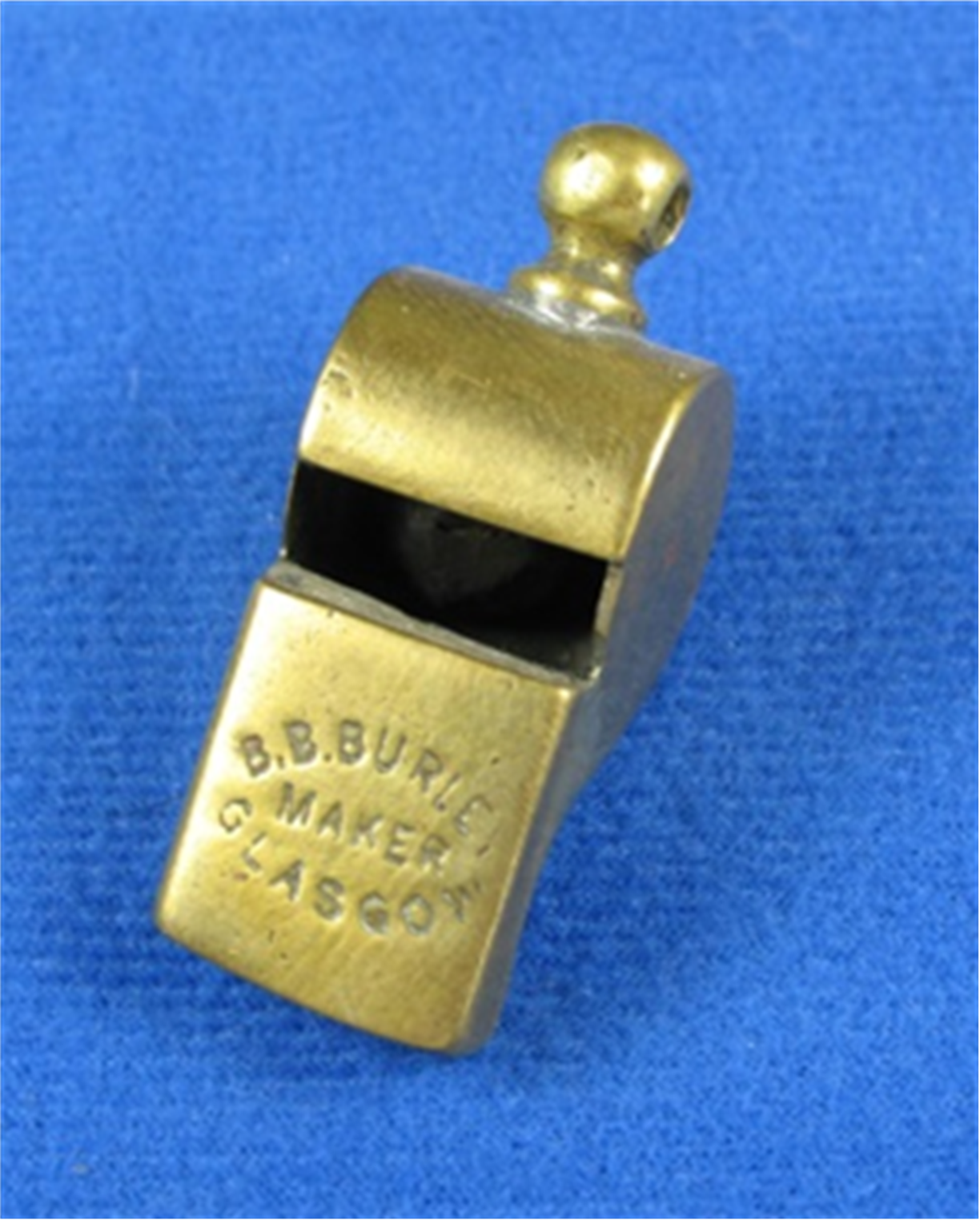
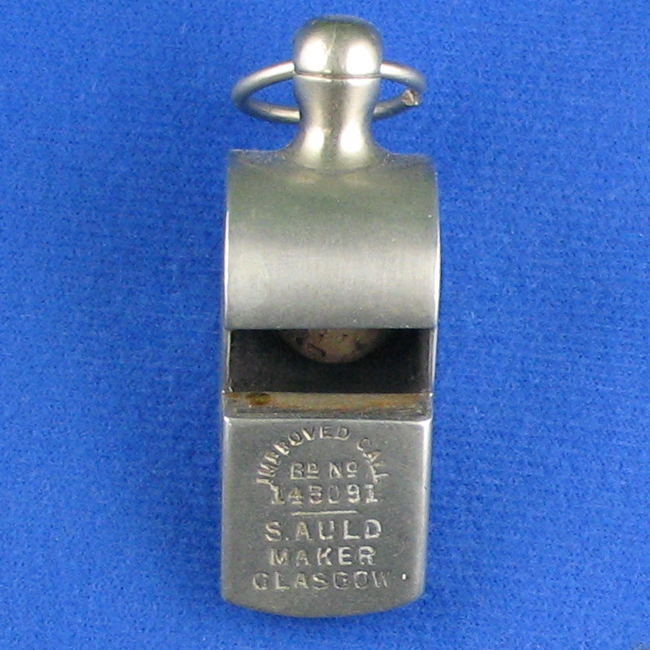
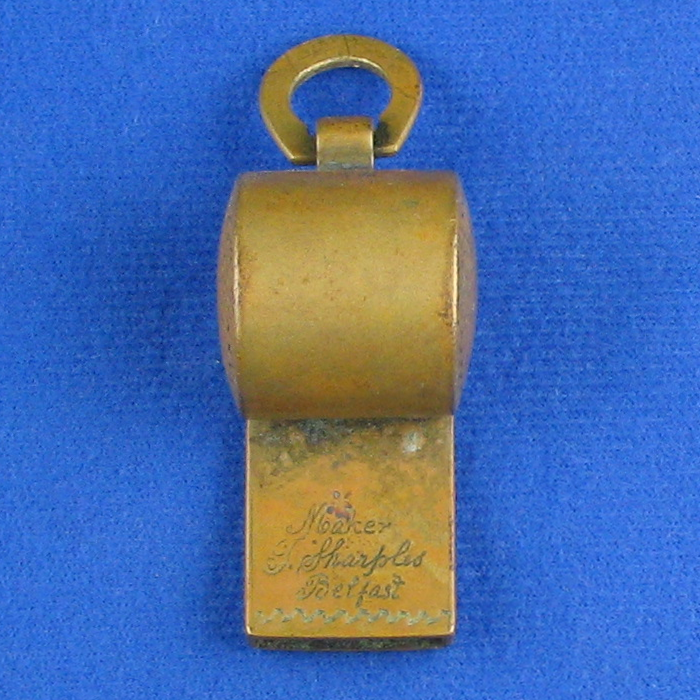
BEAUFORTS:
Further research revealed that Beauforts did have MAKER stamped on them as Jas Simmons clearly was not a whistle maker, but a manufacturer of products.

Note how MAKER and MANUFACTURER are used almost interchangeably on hunting horns from the UK. Here are some comments by a renowned student of hunting horns from the USA.
Compared to whistles there seem to be a much greater number of makers of hunting horns. Part of the reason that there are so many different makers of hunting horns as there are, would be that the time frame studied for the English hunting horn covers about 230 years whereas whistles with MAKER stamps cover about 15 years by comparison. A number of shops changed ownership quite a few times through the generations, sometimes to an apprentice and consequently the name and the mark.
When a horn is marked with “maker” I generally start with your premise that while they might be a “maker” of product, they are not, in fact, the maker of the horn. I have tried to build a case for just that because human nature being what it is, it seems so likely. But… in every instance I have convinced myself that if it has “maker” stamped on it, they did, in fact, manufacture their horn. For instance, there are many saddlers and whip makers that sold hunting horns. Obviously, they were “makers” of saddlery or whips, but horns? In every case where the hunting horn was stamped “maker” I have been able to find that they either hired a person known to manufacture instruments, or bought out a shop known to manufacture instruments, or even just inherited the equipment to manufacture the instruments. Though I’ve tried, I’ve not found one convincing instance to demonstrate the “false” maker advertising concept.
Most named horns that are marked “maker” have names well known to be instrument makers. Something what helps me is that a producer of hunting horns is often a producer of an array of military band instruments. Hunting horns are perhaps relatively insignificant historically, but because they ride on the coattails of mainstream brass band instruments I can find out more about them.
The majority of the marked horns have a company mark, but are without the “maker”, like a saddlery company, and these horns were most often not made in house.
At the end of the day, I believe as you do that “maker” might yet mean only a manufacturer of product, though I’m unable to site examples.
Grosvenor Merle-Smith
Some contributed stamps…..courtesy of Adrian at Hillam Feeds
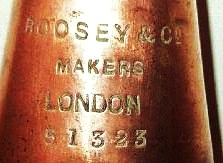
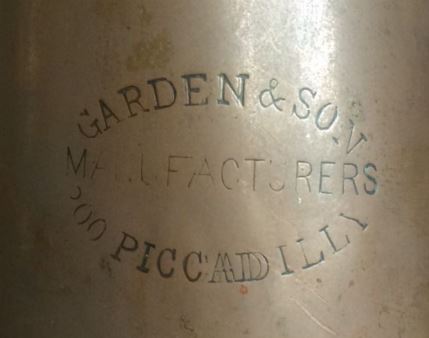
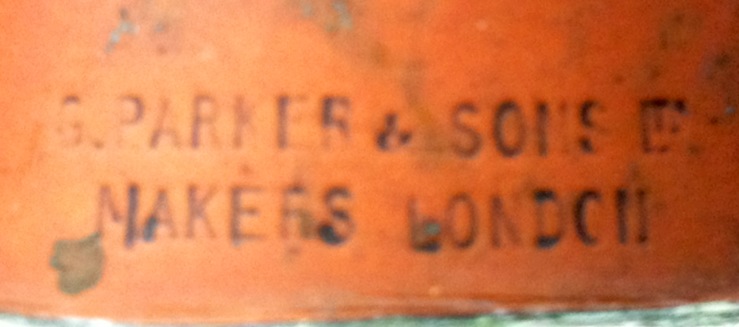
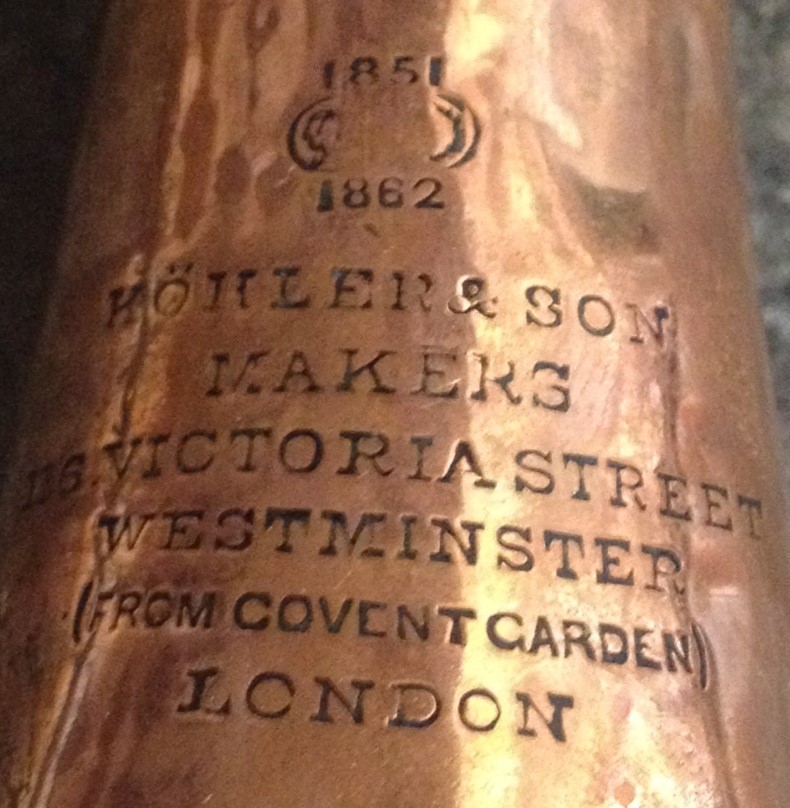
Furthermore, Dan Shouse writes,
"The “Maker” issue involving whistles may have been influenced by an even older similar practice dating back more than 150 plus years concerning silver imports known as Chinese Export Silver. Many of these silver items have stamps that include Latin letters and words, as well as one or more Chinese characters. From the beginning, the thought process of the Western World led people and a number of known Auction Houses, to believe the Latin letters or words translated the Chinese characters and stood for the actual maker of the item. They even referred to them as “hallmarks”, like those found on UK made silver items. Instead these Latin letters and words are advertisements for the silver retailer, and the Chinese characters were the actual mark of the silversmith. Now, what makes it even more interesting…. all Chinese exported silver items exported to the UK from as early as 1850 went through Glasgow for distribution."
We hope this has been edifying and usable for further research along these lines of MAKER stamps.
– TWG
Posted September 5, 2018









